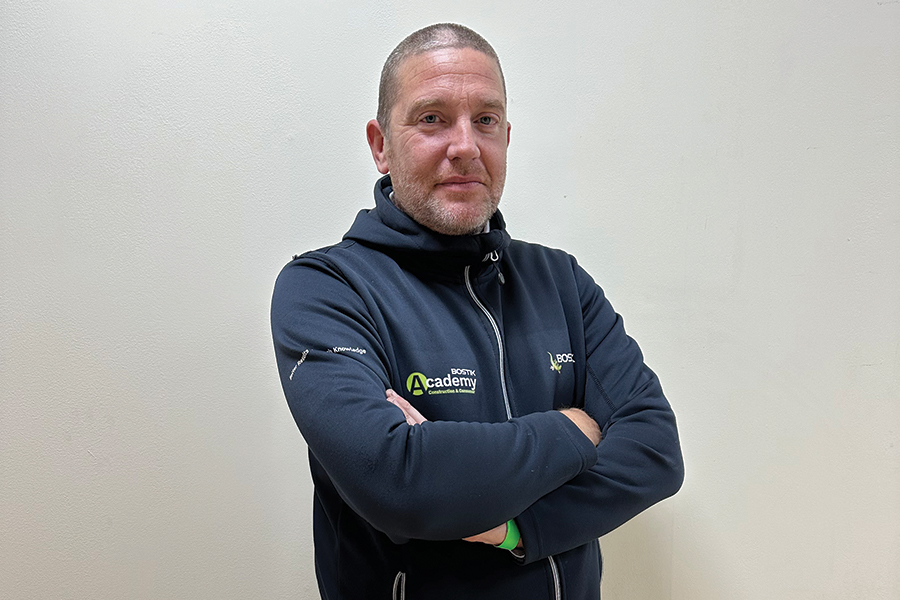Stephen Thornton provides insight into some of the duties undertaken by the technical services team and why they’re important.
I’VE previously written about the importance of technical services and the role they play in supporting customers, users, and the business. But there is much more to the role of technical services than solely offering support. There are a lot of capabilities we have which may go unnoticed or are underutilised when it comes to visiting projects and performing tests.
In this article, I’d like to provide insight into some of the duties we undertake and why they’re important.
Most users of technical services will use us predominately for one of our major functions – site visits. During these visits, we will assess the floors and the building, and perform moisture tests (via hygrometer boxes, probes and carbide bomb tests). This is all in a day’s work for my team.
Surface regularity is first on the list of things we can assess.
Sometimes, it’s quite easy to spot during a site visit that the floor doesn’t look flat and smooth. But other times it’s a little less obvious. The consumption rates of materials used to prepare the floor can drastically increase if the surface undulates and identifying this prior to commencement can be critical.
But even if we spot it and include this in our site reports, will the main contractor accept this and the additional costs this would, undoubtedly, add? If you can highlight areas of undulation using the correct assessment processes, it changes the level of validation that can be presented.
Surface regularity is a simple measurement to undertake. It involves a two-metre-long straight edge that is simply laid over areas of the floor. Where there is a gap under the straight edge, the gap is measured with a graduated wedge, and the resultant measurement generally falls into one of three pre-defined levels.
A measurement between 0-3mm is SR1 – this is a very smooth surface and the best level a floor can achieve. A measurement between 3-5mm is SR2 – a good level and probably most common on sites. It’s generally fine for most flooring types as a good application of smoothing compound will likely benefit the undulations.
A measurement between 5-10mm is level SR3 – here, a few alarm bells should go off. An SR3 floor is not suitable for most flooring installations. Smoothing an SR3 floor will, undoubtedly, take a significantly increased volume of preparation materials.
Regularity is not the only consideration when determining what may be required for a successful application of products. The actual condition of the surface must also be assessed. Several tests are available to check whether the materials you will apply will successfully form a high-strength bond. Scratch tests, hardness tests, crush resistance tests and pull-off tests can all be utilised to assess the condition of the surface.
Scratch testing can take two forms: the Mohs hardness test and the ’Ri-Ri’ scratch test. Mohs hardness test uses different materials of varying hardness mounted to a pencil-type holder. You cycle through the different materials until you find the correct one, which identifies the hardness of the floor. This test is particularly useful when determining the type of mechanical preparation required.
The Ri-Ri test uses a spring-mounted steel tip to scratch the floor. The scratches must be done in a specific way, forming intersecting grooves. The depth and the delamination around the intersections can then be used to form an assessment of the hardness of the floor.
The next test in this category is the pull-off test – a test that can also be utilised in laboratory conditions to assess the bond of different materials to each other. When the surface of the floor is thought to be weak or friable, a steel ‘dolly’ is bonded to the floor with a high-strength epoxy resin. When the resin is fully cured, a machine is slotted onto the dolly, which then begins to pull it away from the floor. Quite simply, the amount of strain needed to pull the dolly off the floor is recorded, offering a clear pass or fail score.
Finally, there is the ISCR (in-situ crush resistance) test, otherwise known as the ‘drop hammer test’. This test has a more specific usage area and is designed to test the strength of sand/cement screeds. The test determines whether a screed is suitably strong enough for the area in which it is to be used and the type of usage the area is designed for.
A steel pole is used to suspend a weight (there are two different weights for different test types). The weight is then repeatedly dropped, and the impact indentation is measured. Again, this test has a clear pass or fail measurement.
This pretty much covers most of the testing to be done onsite. There are several tests that can be performed, some more widely known than others. They are all designed to provide vital information on the condition of a subfloor and, ultimately, determine what level of preparation the floor will need – or even to determine whether a floor is completely unsound and requires changing. But the role of a technician encompasses so much more, including when away from sites.
www.bostik-profloor.co.uk
Stephen Thornton is technical manager – Wall & Floor at Bostik UK


